Do sharks sleep like humans? No, sharks do not sleep in the same way humans do. While some sharks do not sleep at all, others can rest while stationary. During this time, they remain alert and active.
In this blog, I will delve into the intriguing topic of shark sleep – exploring which sharks sleep, their unique sleeping patterns, and their crucial role in their survival.
Do Sharks Sleep?
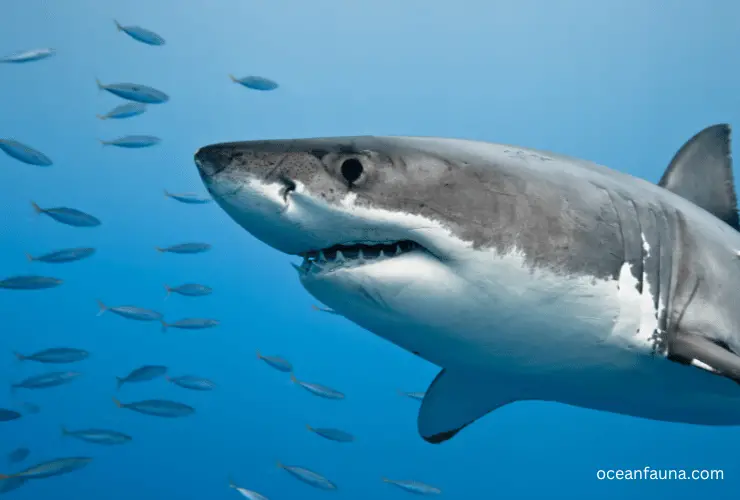
It is a common misconception that all sharks must swim constantly to breathe and survive. However, this is not the case for all shark species. Some sharks, such as the nurse shark, have unique adaptations that allow them to rest while stationary. The nurse shark, for instance, has spiracles that force water across its gills, allowing it to breathe without needing to swim.
While sharks do not sleep like humans do, they have periods of deep rest resembling sleep. During these rest periods, sharks may reduce their activity levels and slow their movements. In fact, some sharks can rest while remaining completely still on the ocean floor.
Several shark species have been observed engaging in periods of restful behavior. The whitetip reef shark, the Caribbean reef shark, the nurse shark, the wobbegong, and the lemon shark are just a few examples of sharks that are able to rest while stationary.
While sharks do have periods of rest, they are still highly alert and responsive to their surroundings. This is because sharks do not have a true sleep cycle like mammals do. Instead, they have periods of restful behavior that allow them to conserve energy and recover from physical activity.
Which Sharks Do Sleep?
Several shark species have been observed engaging in periods of restful behaviour, but do sharks actually sleep? This question has been debated among shark researchers, with some arguing that sharks do not sleep due to their need to constantly swim in order to breathe.
However, recent studies have shown that sharks can enter a state of rest where their brain activity and metabolism slowdown, which can be interpreted as sleep.
Whitetip Reef Shark
The whitetip reef shark, found in the Pacific and Indian Oceans, is known to rest during the day in caves or under ledges. They typically rest for several hours and then become active again by swimming around and hunting at night.
During their resting periods, their eyes remain open, and they have been known to startle easily if disturbed. Despite being in a state of rest, their swimming muscles continue to move, allowing them to remain stationary while still obtaining oxygen-rich water over their gills.
Caribbean Reef Shark
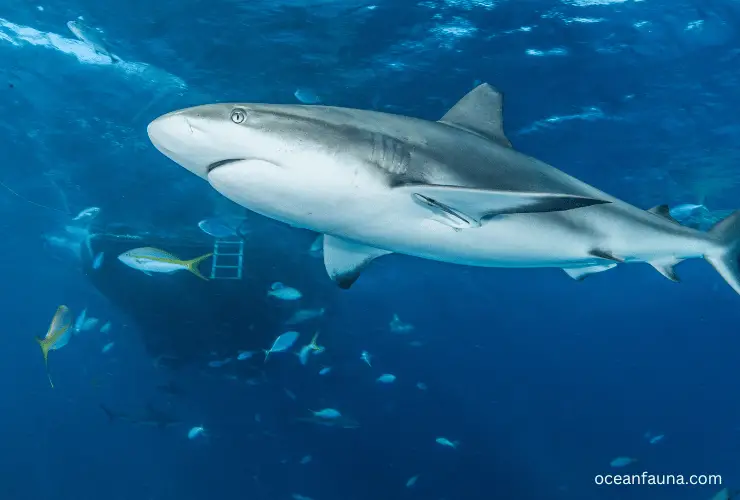
The Caribbean reef shark is another species that is known to enter into a state of rest. These sharks have been observed resting close to the ocean floor or tucked under ledges during the day.
Like the whitetip reef shark, their eyes remain open during rest periods, and they are easily startled when disturbed. Caribbean reef sharks’ metabolic rate and heart rate have been observed to decrease during rest periods.
Nurse Shark
The nurse shark is a nocturnal bottom-dwelling species that likes to rest in caves or under ledges during the day. They are known for resting in groups and can be found stacked on top of each other, often with their tails intertwined.
Nurse sharks are believed to be one of the most stationary sharks during rest periods, with their gill movements and muscle contractions slowing down significantly.
Wobbegong
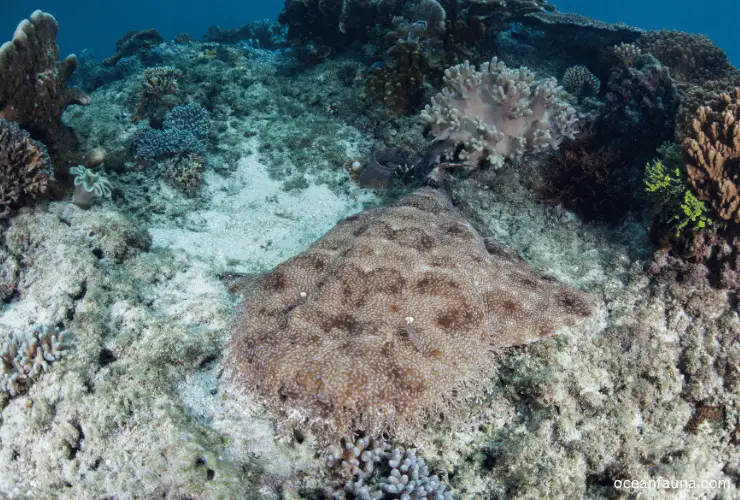
The wobbegong, found in the shallow coastal waters of Australia, is a species that is well-known for its ability to stay motionless while resting on the bottom. Its unique appearance allows it to blend in with its surroundings, making it difficult to spot. Wobbegong sharks rest during the day and become active at night.
They are ambush predators, so their ability to remain still during rest periods is essential to their hunting success.
Lemon Shark
Lemon sharks, found in the western Atlantic Ocean, are also known to enter into a state of rest. They typically remain close to the ocean floor during rest periods, often tucking themselves under rocky ledges. Their metabolic and heart rates decrease during these periods, indicating a state of rest.
Lemon sharks have also been observed to rest on sandy bottoms during the day, with their dorsal fins exposed above the water’s surface, a behavior known as “logging.
Do Sharks Sleep While Swimming?
Sharks are intriguing creatures, and scientists continue to make new discoveries about their behaviour and habits. A commonly asked question about sharks is whether they sleep while swimming. The answer is not straightforward, as it varies depending on the shark species.
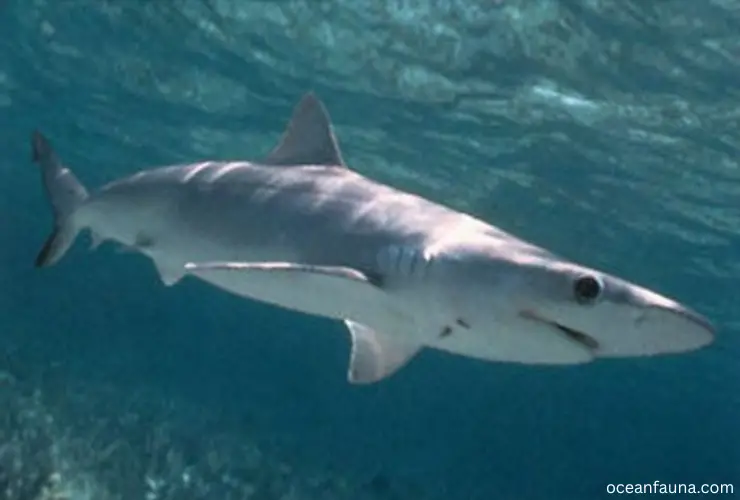
Some sharks have been observed sleeping while swimming, a behaviour known as ‘sleep swimming.’ This phenomenon has been observed in species such as the nurse shark.
During sleep swimming, the shark will slow down its swimming pattern and close its eyes, but it is still swimming forward. This behaviour is similar to when humans go into a light sleep while doing an activity, such as dozing off on a long car ride.
However, not all sharks sleep while swimming. Some species will rest on the seafloor during periods of inactivity. For example, the horn and carpet sharks will bury themselves in the sand to rest. This behaviour provides them with a safe place to sleep and camouflages them from predators.
Other species of sharks prefer to rest in groups, such as the lemon shark. These sharks will gather in a safe area, such as a cave, to rest. This behaviour is thought to provide protection from predators, as there is safety in numbers.
How Do Sharks Sleep If They Can’t Stop Swimming?
Although sharks never truly stop swimming, they are still able to achieve a period of restful sleep. This is because sharks have a unique respiratory system that allows them to rest on the seafloor without running out of oxygen.
Sharks with spiracles, which are specialized openings located behind the eyes, are able to pump water over their gills to extract oxygen even when they are not swimming.
During rest periods, these sharks will find a spot on the seabed and remain motionless, with their spiracles pumping water over their gills. This allows them to rest without swimming continuously to extract oxygen from the water. It’s worth noting, however, that the level of activity during this rest period varies across different shark species.
For example, some shark species are known to swim continuously, even during rest periods, albeit at a slower pace. These sharks do this to keep water flowing over their gills, so they can extract the oxygen they need. Others, however, simply remain motionless on the sea floor, utilizing their spiracles to extract oxygen from the water for respiration.
Interestingly, some sharks even have the ability to shut off parts of their brain during periods of restful sleep. This is thought to help conserve energy and promote overall health and longevity. The ability to sleep while continuing to extract oxygen from the water is just one of the many fascinating adaptations that allow these apex predators to survive and thrive in the ocean.
Do Sharks Sleep at Night or Day?
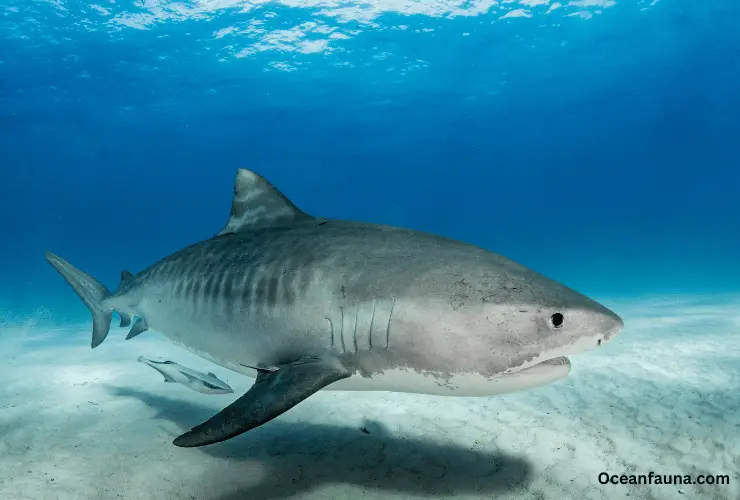
Sharks sleep more during the day and become more active at night. However, understand that shark sleep is different from sleep in other animals.
You already know sharks do not have a traditional sleep pattern like humans and other animals. They do not have a designated area to sleep or close their eyes. Instead, sharks must continuously swim to receive oxygen from the water passing through their gills.
Not all shark species have the same sleep pattern. Some species sleep more than others; some may even rest on the ocean floor or hide in caves during the day.
In terms of when sharks are more active, research has shown that some species, such as the great white shark, may be more active at night when hunting for prey. However, this is not true for all species of sharks, and their activity levels may also depend on factors such as water temperature and food availability.
How Long Do Sharks Sleep?
Sharks spend considerable time swimming and hunting for their next meal. However, they may reduce their activity levels during the day and rest on the ocean floor or in a cave. During these periods of rest, sharks may enter a state of sleep, also known as shut-eye.
Unlike humans, who have a fixed sleeping schedule of about 6-8 hours at night, sharks do not have a specific sleeping schedule. Instead, they sleep for short and sporadic periods throughout the day and night. The duration of these rest periods may vary from a few minutes to several hours, depending on various factors such as age, size, species, and environmental conditions.
Some studies have indicated that sharks need to move continuously to pump water over their gills and extract oxygen from the water, preventing them from entering deep sleep.
Therefore, sharks may be more inclined to sleep while floating in the water, but even then, their eyes remain open, and they are still alert to their surroundings for any potential threats.
Conclusion
Now you have detailed information about sharks’ sleeping patterns. Sharks do sleep, although their sleep pattern may differ from other animals. Their unique respiratory system allows them to extract oxygen from water without constant swimming. They can rest on the seafloor or in groups during inactive periods, and some species can even shut off parts of their brain during sleep.
Additionally, some shark species have been observed sleeping while swimming, known as ‘sleep swimming.’ The level of activity and sleep duration can vary across shark species, influenced by factors like water temperature and food availability.
